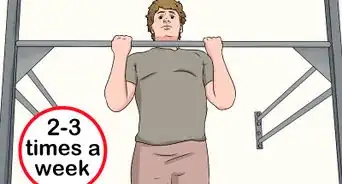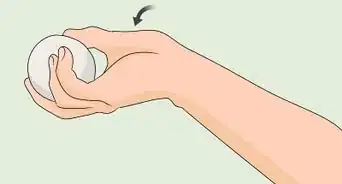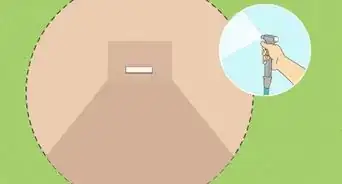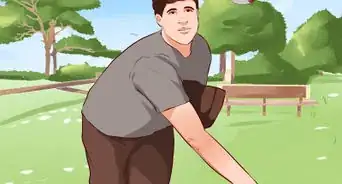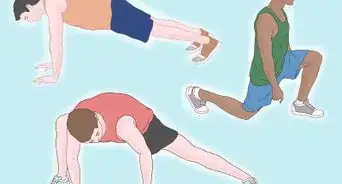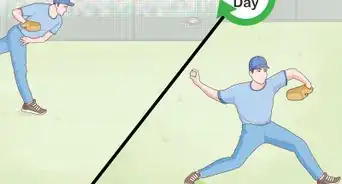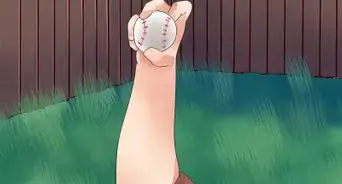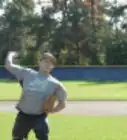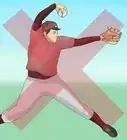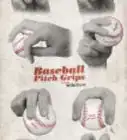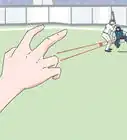This article was co-authored by wikiHow Staff. Our trained team of editors and researchers validate articles for accuracy and comprehensiveness. wikiHow's Content Management Team carefully monitors the work from our editorial staff to ensure that each article is backed by trusted research and meets our high quality standards.
wikiHow marks an article as reader-approved once it receives enough positive feedback. In this case, 86% of readers who voted found the article helpful, earning it our reader-approved status.
This article has been viewed 397,738 times.
Learn more...
The slider is the third-fastest pitch in baseball, ranking closely behind the 4-seam fastball and 2-seam fastball. From gripping the ball to throwing the pitch, there are many steps that can help produce an effective slider.
Steps
Gripping the Ball
-
1Place your index and middle fingers. Grip the baseball with your index and middle fingers placed tightly together across an outer seam of the ball located at the horseshoe or U-shape seam. For right-handers, place your middle finger across the right half of the seam. Left-handers should do the opposite: place your middle finger across the left half of the seam. This should position your fingers towards the outside of the ball (off-center).
-
2Place your thumb. Place your thumb under the opposite inside seam of the ball. The further your thumb is from your other 2 fingers, the more the pitch will drop. The closer your thumb is to your other two fingers, the more it will slide. If your index and middle fingers are at a 10 or 11 o'clock position, your thumb should be at a 4 or 5 o'clock position.Advertisement
-
3Put pressure on your index finger. Hold the pitch so that the most pressure comes from the thumb-side of your index finger.[1] The key to gripping a slider is holding the outer third of the ball.
- Putting pressure on your both your index and middle fingers will cause the pitch to balance out, or become a cutter.
-
4Cock your wrist slightly to the thumb side of the throwing hand. Most pitchers do this to ensure that the ball releases on the thumb-side of your index finger. The movement of this pitch comes from the ball spinning off your fingers.
- Avoid twisting your wrist. Twisting your wrist can cause injury over time.
Throwing a Slider
-
1Hide your grip. If the batter can see your grip before the pitch, chances are they will be more prepared for what you are about to throw at them. Hide your grip in your glove to keep players on the other team unaware of the slider you are about to throw.
-
2Wind up and throw. Pivot and shift your body weight from the back foot forward toward home plate. Follow through with your motion. Your feet should be parallel at the end of the pitch and your throwing arm should come across the front of your body.
-
3Keep your wrist loose as you release the ball. Remember to have it cocked slightly, but resist the urge to twist it (side to side) it when you release the pitch. As you release, apply pressure with just your index finger to ensure a late break.[2]
- Try not to drive your wrist forward with more than an adequate amount of force.
-
4Snap your wrist when releasing a slider. Snap your wrist (up to down) to make the ball drop as it crosses the plate. Remember to let the spin of the slider come from your index finger releasing from the ball, not a twisting of your wrist. Snapping is an up and down motion while twisting is a side to side motion.
-
5Think fastball as you release the pitch. Prepare to come right down through with your wrist, just like you would with a fastball. The greater the angle created by turning the fingers, the wider the break on the slider[3]
-
6Aim for the slider to break on the inside or outside of the plate. The slider is an effective pitch whether thrown to the same side or opposite side hitters. However, the slider loses its effectiveness if it's thrown directly over the plate. The success of the slider is its ability to break at the last minute and catch the batter off guard.[4]
- A left-handed pitcher's slider should break down and away from left-handed hitters, and down and in on right-handed hitters.
- A right-handed pitcher's slider should break down and away from right-handed hitters, and down and in on left-handed hitters.
Community Q&A
-
QuestionHow fast is a slider pitch?
 Community AnswerA slider is typically thrown with less speed than a fastball, but with greater speed than the pitcher's curveball.
Community AnswerA slider is typically thrown with less speed than a fastball, but with greater speed than the pitcher's curveball. -
QuestionCould it screw up your throwing arm?
 Community AnswerYes, any pitch can screw up your arm if not thrown correctly. I would just be careful and not use it as a primary pitch until high school or college to make sure you are throwing it correctly.
Community AnswerYes, any pitch can screw up your arm if not thrown correctly. I would just be careful and not use it as a primary pitch until high school or college to make sure you are throwing it correctly. -
QuestionHow can I throw a curveball?
 Community AnswerDon't worry about wrist motion; keep your wrist firm and worry about the angle of your arm. This will maximize bottom-left break if you are a right-handed pitcher. The side of your hand should always face the batter, and your wrist should always finish at your left hip (again, right-handed). Also, try to aim at the left shoulder of a right handed batter, as this is a good aiming spot for the break to be efficient. For more information, you can refer to this article: How to Throw a Curveball.
Community AnswerDon't worry about wrist motion; keep your wrist firm and worry about the angle of your arm. This will maximize bottom-left break if you are a right-handed pitcher. The side of your hand should always face the batter, and your wrist should always finish at your left hip (again, right-handed). Also, try to aim at the left shoulder of a right handed batter, as this is a good aiming spot for the break to be efficient. For more information, you can refer to this article: How to Throw a Curveball.
Warnings
- Pitchers under the age of 18 should attempt this pitch with caution. The stress placed on the throwing elbow greatly increases the risk of fracture to the medial epicondyle growth plate.⧼thumbs_response⧽
References
About This Article
To throw a slider, start by gripping a U-shaped seam on the ball with your index and middle fingers. Put your thumb under the opposite inside seam, but remember to conceal your grip in your glove so the batter can't see what you're throwing. To throw, cock your wrist towards the thumb side of your throwing hand, then pivot from your back foot towards home plate. As you throw the ball, apply pressure with your index finger to ensure a late break and snap your wrist up to down to make the ball drop over the plate. For tips on how to make the slider break on the inside or outside of home plate, read on!
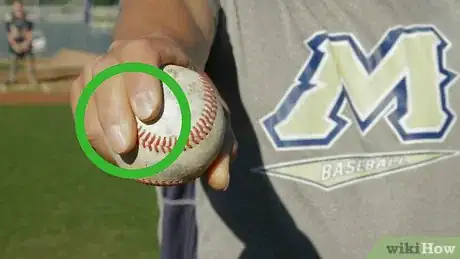

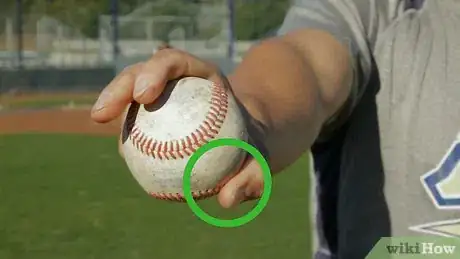
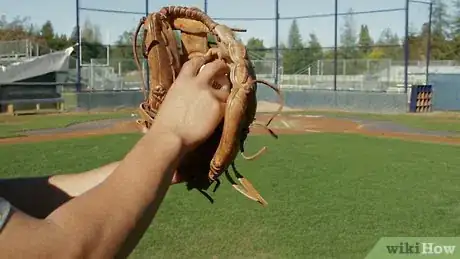
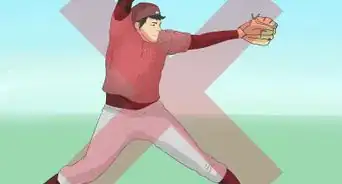

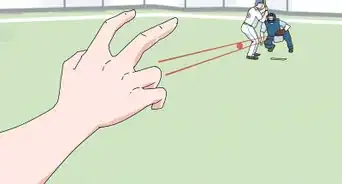
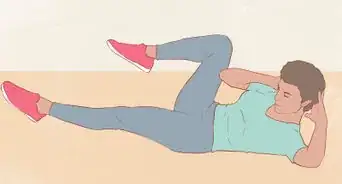
-Step-8.webp)
